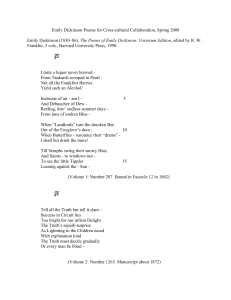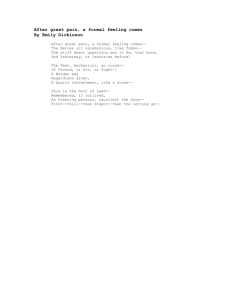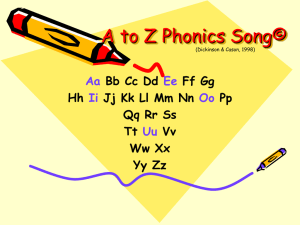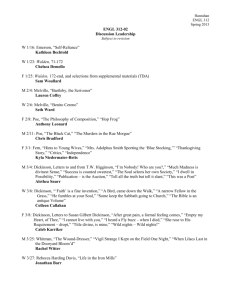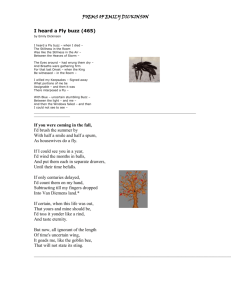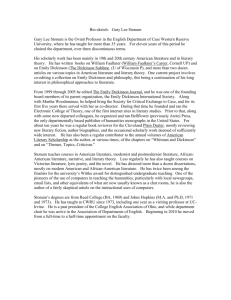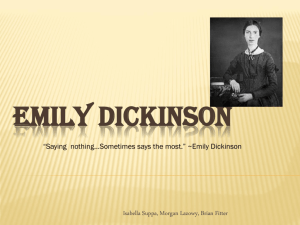Emily Dickinson (1830-1886)
advertisement
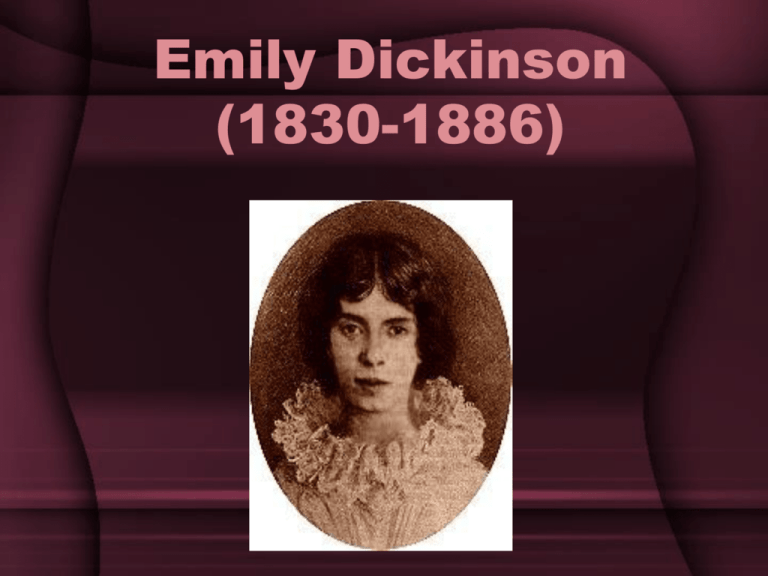
Emily Dickinson (1830-1886) Emily Dickinson: Biography • Born the second of three children in Amherst, Massachusetts • Father was a lawyer and one of the wealthiest and most respected citizens in the town, as well as a conservative leader of the church • Dickinson grew up regularly attending services at the Congregational First Church of Christ (Congregational churches essentially followed the New England Puritan tradition) • She attended Amherst Academy, where she studied a modern curriculum of English and the sciences, as well as Latin, botany and mathematics Dickinson seldom left Amherst • Her one lengthy absence was a year at Mt. Holyoke Female Seminary (1847-48), in South Hadley, ten long miles away, where she was intensely homesick for her “own DEAR HOME.” • Dickinson declared home to be holy, “the definition of God,” a place of “Infinite power.” • She admired Ralph Waldo Emerson and his ideas, but did not go next door to meet him when he stayed there during a lecture tour in 1857. Religion played an important role in her life. • Dickinson was terrorized by old-fashioned sermons about damnation and by the frequency of death in that age of high infant and childhood mortality. • As her friends moved away and got married, she gradually became estranged from the religious beliefs of her community. Emily Dickinson: Biography • She spent sociable evenings with guests such as Samuel Bowles, editor of the Springfield Daily Republican • She also enjoyed dancing, buggy rides, parlor games, and other forms of entertainment until she began to seclude herself • Around 1860, she stopped visiting with other people and became a recluse • In 1862, her poem “Safe in their alabaster chambers” appeared in the Springfield Daily Republican • While becoming more reclusive, Dickinson intensified correspondence with friends and output of poetry • She suffered from eye-trouble in 1864 and 1865 • The last 12 years she spent in self-imposed isolation in her parents’ home • Allegedly, Dickinson dressed entirely in white and communicated only indirectly with visitors and friends, from behind a folding screen or via notes and gifts in a basket she let down from her window into the garden • Her most productive period coincided with the civil war, during which she wrote about 800 poems Literary Influences • She knew the poetry of Longfellow, Holmes, and Lowell. • She identified with Hawthorne’s isolated, gnarled, idiosyncratic characters. • Emerson was an enduring favorite. • She loved Thoreau, recognizing a kindred spirit in the independent, nature-loving man who delighted in being the village crank of Concord. Other Influences • The Bible • Dead and living British writers – Her knowledge of Shakespeare was minute and extremely personal. Dickinson’s Style Short Meter (8.6.8.6)--Dickinson found poetic freedom within the confines of this meter. A narrow Fellow in the Grass Occasionally rides-You may have met him--did you not His notice sudden is-- Slant Rhyme Within the structure form of short meter, she multiplied possibilities by substituting consonance and assonance for rhyme. . . . Have passed, I thought, a Whip lash Upbraiding in the Sun When stopping to secure it It wrinkled and was gone-- Several of Nature’s People I know, and they know me-I feel for them a transport Of cordiality-- Themes Dickinson often brought dazzling originality to overwrought topics. •Life •Love, including Marriage and the position of women in society. •Nature--she was well-schooled in contemporary science. •Time and Eternity •Death and Mourning •Religion and Faith •Isolation and Depression •Poetry and Language Her Grave Emily Dickinson The Homestead 1813 The Homestead Repainted Homestead Dickinson’s Room Dickinson’s Room Newly Discovered Photo
